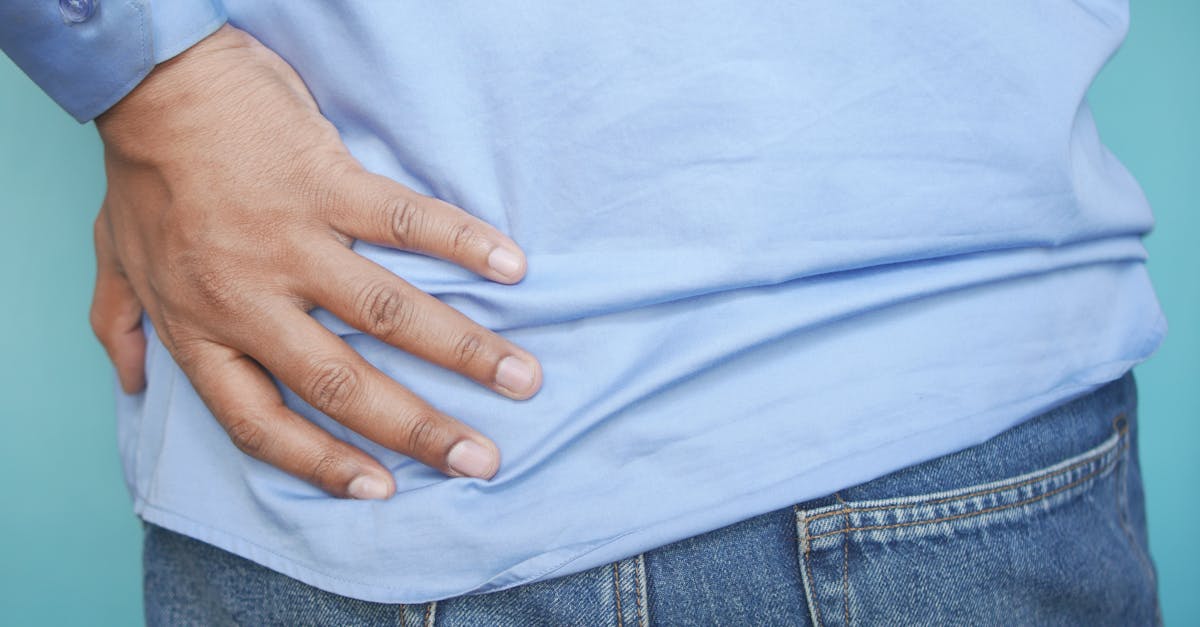Outside Hip Flexor Pain: Understanding and Addressing the Discomfort
Unraveling the Causes and Navigating Relief Strategies

Outside Hip Flexor Pain: Unraveling the Discomfort and Finding Relief
Outside hip flexor pain, characterized by a nagging discomfort on the outer part of the hip, can hamper daily activities and limit mobility. Understanding the underlying causes and symptoms is crucial for effective pain management. This comprehensive guide explores the intricacies of outside hip flexor pain, providing evidence-based remedies and practical lifestyle modifications to alleviate the discomfort.
The causes of outside hip flexor pain vary, including muscle strains from overexertion or repetitive movements, tendinitis due to inflammation of the tendons, and hip impingement where surrounding structures rub against the hip bone. Pinpointing the exact cause through a physical examination and imaging techniques is essential for tailored treatment.
1. Understanding Outside Hip Flexor Pain
Understanding Outside Hip Flexor Pain
Outside hip flexor pain refers to discomfort or pain experienced on the outer side of the hip. This pain can originate from various structures within the hip joint, including muscles, tendons, and bones.
Muscle strains are a common cause of outside hip flexor pain. These injuries occur when the muscles are overstretched or torn due to sudden or excessive force. Repetitive movements or overuse can also lead to muscle strains in the hip flexors.
Tendonitis is another potential cause of outside hip flexor pain. Tendons are the tissues that connect muscles to bones. When these tendons become inflamed, they can cause pain and discomfort. Hip flexor tendonitis can result from repetitive use or sudden strain of the hip flexor muscles.
Hip impingement is a condition that occurs when the bones of the hip joint rub against each other abnormally. This impingement can lead to pain and damage to the surrounding structures, including the hip flexor muscles.
2. Symptoms and Diagnosis

Symptoms and Diagnosis
Outside hip flexor pain typically manifests as localized discomfort or pain on the outer side of the hip. This pain may worsen with activities that involve hip flexion, such as walking, running, or climbing stairs. Other common symptoms include:
- Tenderness to the touch on the outer hip
- Stiffness and reduced range of motion in the hip
- Pain that radiates down the outer thigh
- Weakness in the hip flexor muscles
Diagnosing outside hip flexor pain typically involves a physical examination and a review of the patient’s symptoms. During the physical examination, the doctor will assess the range of motion in the hip, check for tenderness and swelling, and perform specific tests to evaluate the hip flexor muscles.
Imaging techniques, such as X-rays or MRIs, may be ordered to confirm the diagnosis and rule out other potential causes of hip pain, such as hip osteoarthritis or a hip labral tear.
3. Effective Remedies for Outside Hip Flexor Pain
Effective Remedies for Outside Hip Flexor Pain
The treatment for outside hip flexor pain typically involves a combination of rest, ice, compression, and elevation (RICE), along with pain relievers and physical therapy.
-
RICE: Resting the hip joint, applying ice packs to reduce inflammation, compression with an elastic bandage to minimize swelling, and elevation to promote fluid drainage can all help alleviate pain and speed up healing.
-
Pain relievers: Over-the-counter pain relievers, such as ibuprofen or acetaminophen, can help reduce pain and inflammation.
-
Physical therapy: Physical therapy can help improve flexibility and strength in the hip flexor muscles, which can reduce pain and prevent future injuries. Physical therapists may also use modalities such as ultrasound or electrical stimulation to promote healing and reduce pain.
In some cases, more invasive treatments, such as injections or surgery, may be necessary to address the underlying cause of outside hip flexor pain.
Stretching Exercises
Stretching Exercises
Stretching exercises can help improve flexibility in the hip flexor muscles, which can reduce pain and prevent future injuries. Here are a few illustrated stretching exercises that specifically target the outside hip flexor muscles:
-
Standing quad stretch: Stand with your feet hip-width apart. Bend your right knee and grab your right foot with your right hand. Pull your heel towards your glutes until you feel a stretch in the front of your right thigh. Hold for 30 seconds and repeat on the other side.
-
Kneeling hip flexor stretch: Kneel on your right knee with your left foot flat on the floor in front of you. Sit back on your right heel and lean forward until you feel a stretch in the front of your right hip. Hold for 30 seconds and repeat on the other side.
-
Low lunge with hip flexor stretch: Start in a low lunge position with your right foot forward and your left knee on the ground. Reach your right arm overhead and bend your right knee slightly. Lean forward and reach your left arm towards your right foot until you feel a stretch in the front of your right hip. Hold for 30 seconds and repeat on the other side.
Strengthening Exercises
Strengthening Exercises
Strengthening the hip muscles can help improve stability and endurance, which can reduce pain and prevent future injuries. Here are a few strengthening exercises that target the hip flexor muscles:
-
Hip flexor raises: Start by lying on your back with your knees bent and your feet flat on the floor. Lift your right leg straight up, keeping your knee straight. Slowly lower your leg back down. Repeat 10-15 times and then switch legs.
-
Standing hip flexor stretch with resistance band: Stand with your feet hip-width apart and place a resistance band around your right foot. Hold the ends of the band in each hand and step forward with your right leg. Bend your right knee and lean forward until you feel a stretch in the front of your right hip. Hold for 30 seconds and repeat on the other side.
-
Weighted hip flexor raises: Start by lying on your back with your knees bent and your feet flat on the floor. Hold a weight in each hand and place your feet on a weight bench. Lift your hips up towards the ceiling, keeping your back straight. Slowly lower your hips back down. Repeat 10-15 times.
4. Lifestyle Modifications for Pain Management

Lifestyle Modifications for Pain Management
In addition to specific treatments and exercises, certain lifestyle modifications can also help manage outside hip flexor pain:
-
Maintaining a healthy weight: Excess weight can put extra stress on the hip joint, which can worsen pain. Losing weight if you are overweight or obese can help reduce pain and improve overall hip function.
-
Avoiding prolonged sitting: Sitting for long periods of time can shorten the hip flexor muscles and contribute to pain. If you have a job that requires you to sit for extended periods, get up and move around every 20-30 minutes to keep your hip flexors loose.
-
Ensuring proper posture: Poor posture can put strain on the hip flexor muscles and lead to pain. Make sure to sit up straight with your shoulders back and your feet flat on the floor. When standing, distribute your weight evenly on both legs and avoid locking your knees.
5. When to Seek Professional Help
When to Seek Professional Help
It is important to consult a healthcare professional if your outside hip flexor pain persists, worsens, or interferes with your daily activities. You should also seek medical attention if you experience sudden onset of severe pain or if you have any of the following symptoms:
- Numbness or tingling in the hip or leg
- Weakness in the hip or leg
- Inability to bear weight on the affected hip
- Joint swelling or redness
- Fever
A healthcare professional can help diagnose the cause of your hip flexor pain and recommend the best course of treatment.
Quiz
1. What is the most common cause of outside hip flexor pain?
- (a) Muscle strains
- (b) Hip impingement
- (c) Tendinitis
- (d) Arthritis
2. Which of the following is NOT a symptom of outside hip flexor pain?
- (a) Localized pain
- (b) Tenderness to the touch
- (c) Numbness in the hip
- (d) Movement limitations
3. Which of the following is an effective home remedy for outside hip flexor pain?
- (a) Applying heat to the affected area
- (b) Resting the hip joint
- (c) Taking over-the-counter pain relievers
- (d) Stretching the hip flexor muscles
4. When should you seek professional help for outside hip flexor pain?
- (a) If the pain is severe or sudden in onset
- (b) If the pain persists for more than a few days
- (c) If the pain interferes with your daily activities
- (d) All of the above
Answer Key
-
(a)
-
(c)
-
(d)
-
(d)
-
(a)
-
(c)
-
(d)
-
(d)
